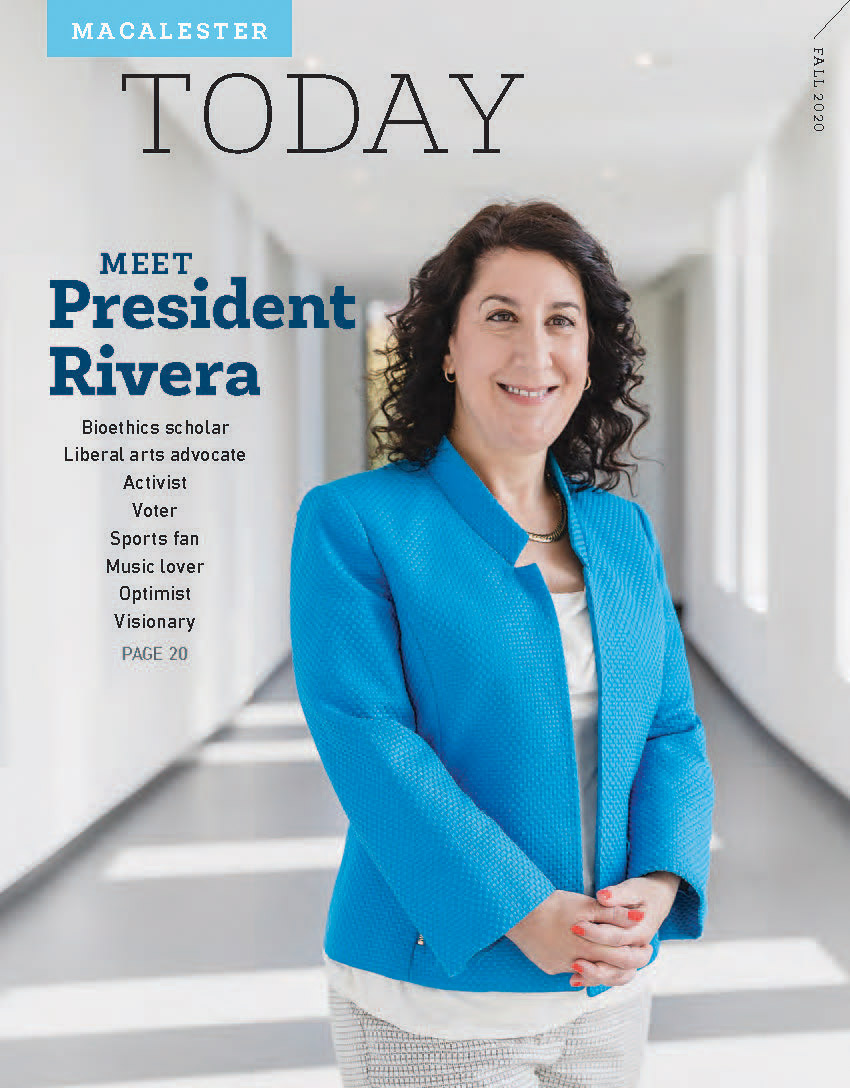
In a typical summer, chemistry professor Leah Witus would spend her time away from her classroom, immersed in her lab with student research assistants, making and studying peptides that catalyze chemical reactions. This year, though, she worked her way through her syllabi and created a series of prerecorded videos that she’ll use to supplement her teaching this fall. It was no small task, compounded by having two young kids at home with no daycare available, but Witus expects the work will pay off, in any form her classroom takes this year.
“I’ve been able to reimagine almost every aspect of the course to optimize student learning,” Witus says, adding that she’s able to enhance her explanations in the video with animated illustrations and molecular modeling software. “Since the prerecorded video lectures will be available asynchronously, we’ll use our synchronous class time (whether in person or via Zoom) for problem-solving tutorials and group question and answer sessions. I’ve never put more thought into crafting the optimal explanation for every concept than I am right now in preparing for hybrid teaching.”
For Mac faculty and staff, it was a summer of intense reflection and preparation for various fall scenarios. They applied lessons from what worked and what didn’t last spring, overhauling course plans for both hybrid instruction and this year’s module system.
Though many of those efforts unfolded at dining room tables and home offices, they weren’t without support from their colleagues. This spring, the college’s Academic Technology Services team tested a variety of technology resources, thinking beyond simply equipping classrooms with new tech. “Putting cameras and microphones in classrooms isn’t a long-term benefit,” says Jenn Haas, associate vice president for Information Technology Services. “As we began planning, it became increasingly clear how much creativity could be facilitated by the tools and how valuable our faculty would find them in every aspect of their work, including research.”
The solution the team landed on: building a base technology kit to distribute to every faculty member that includes a Brio webcam, an iPad, an Apple pencil, and a tripod. The kit was created because of COVID, but its resources will extend far beyond the pandemic. “By providing more tools and training for faculty to create digital projects, this opens up a lot of potential,” Haas says. “There’s no limit to what they can do with it.”
Thanks to those kits, art faculty created livestream studios for demos, using head-mounted GoPros to help illustrate techniques. In dance, wireless microphone headsets allow faculty to play music, move around the studio, and still speak over the audio during live and recorded classes. Professors are even able to replicate a communal whiteboard environment through apps like Jamboard, OneNote, and Padlet.
That’s what German studies professor Britt Abel is doing for her “Vampires: From Monsters to Superheroes” class. “I used to take photos of my whiteboard when my class had done a lot of work gathering notes and questions, but now it’s easier to keep a record of this kind of work by using Padlet or Jamboard,” she says. “On the first day of class, for example, my students brainstormed associations and legends about vampires and recorded them together on a Jamboard page. And now that my students are writing papers, it’s easy for them to refer back to the document for ideas and inspiration.”
Professors’ preparation isn’t limited to overhauling how to present content. They’re thinking deeply and strategically about carving out space online for seemingly small yet pivotal moments: the unplanned conversations that unfold when everyone is packing up, or the student who shows up a few minutes early because they need to talk. Building community online is crucial, especially in a fall when physical distancing limits students in how and where they can gather.
“I’ve worked with a bunch of new tools, but I’ve spent as much time this summer learning about the research about the pedagogy of trauma, and the emotional and psychological challenges of teaching and learning online,” classics professor Beth Severy-Hoven says. “And what kinds of class activities will still allow students to communicate with each other and work together? They need structured communication with each other on a whole different level than before. We need to think about our classes in a different way.”
It’s a big challenge, says her colleague, classics professor Andy Overman, and while this fall won’t replace what departments can achieve in person, there’s new opportunity, too. “If this had happened 15 years ago, we would’ve been in a really tough spot: my fax machine wasn’t going to get it done,” Overman says. “But this technology came along at the right time. To see people respond to this challenge and find ways to use this technology, to make texts and places and important historical moments come alive, has been pretty amazing.”
October 21 2020
Back to top





